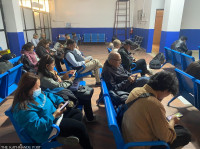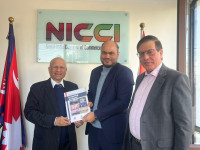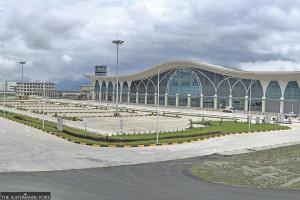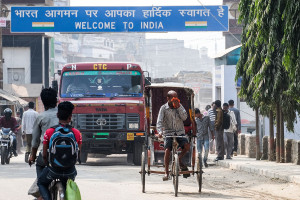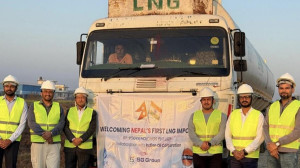Money
Nepal plans its ‘biggest’ iron dig
Jhumlabang iron mine in Rukum East is estimated to contain a hematite deposit of 200 million tonnes spread over 100 hectares.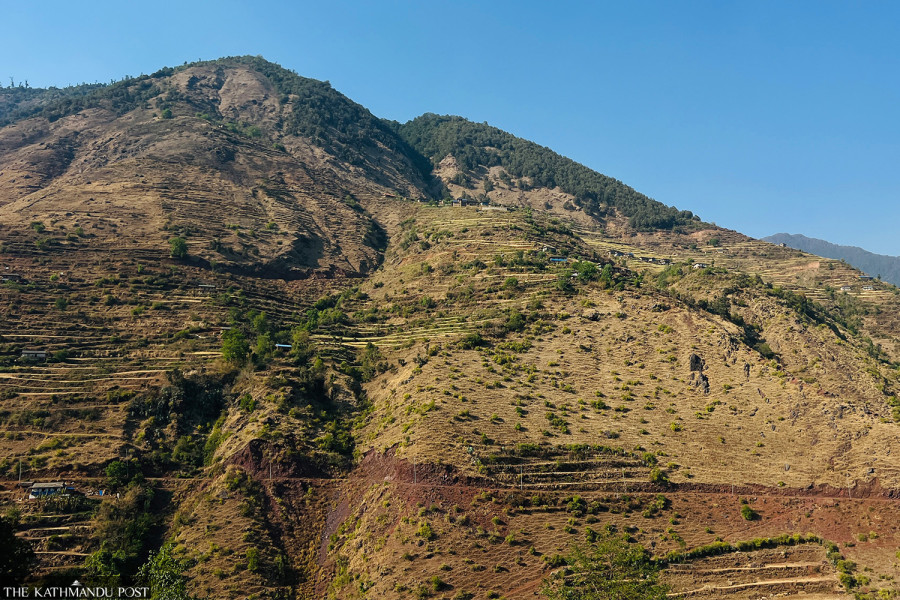
Mahesh KC
The Department of Mines and Geology is set to excavate iron ore from Jhumlabang in Rukum East, which it said to be Nepal’s biggest iron mine so far.
In Nepal, iron has been found in Thoshe of Ramechhap, Dhaubadi of Nawalparasi East, Jelbang of Rolpa, Jhumlabang of Rukum East and many other hill areas. Among them, the Jhumlabang iron deposit is the biggest in terms of volume, with an estimated hematite deposit of 200 million tonnes within 100 hectares.
The project was also showcased in the recently concluded Nepal Investment Summit.
In May last year, a team led by geologist Saunik Bhandari from the Mineral Promotion and Processing Centre of the Department of Mines and Geology conducted a study in Jhumlabang.
Many years ago, there were rumours of a copper mine in the area. Following these reports, the team from the department was sent to conduct the study. “We found that the area is richer in iron than copper. Again, we conducted a detailed study last September,” said Bhandari.
The study, which lasted two months, confirmed the presence of a huge deposit of iron. “The department is preparing for an excavation.”
“We have conducted topological surveys, geographical mapping, channel sampling and environment study. Around 1,100 samples have been collected through channel sampling and it is being tested,” he said.
Narayan Baskota, information officer at the department, said that they are in the final stages of readying a lab test report.
“Through the collected sample, it has been confirmed that the mine has a medium-grade iron ore with a purity of 45 percent.”
“We are also in the final stages of a chemical test, which will help us identify the quantity of the iron in the mine. After this, we will proceed with iron excavation,” Bhandari said.
The department invited bids for investment from the private sector for the excavation of iron at the Nepal Investment Summit, Baskota said.
The department, which has concluded a technical study in several phases, said that the mining would also be done in different phases.
The first phase involves separating iron from the stone which is called beneficiation. In this process, it removes the gangue minerals from ore to produce a higher-grade product. Beneficiation may involve physical and chemical processes.
As iron and steel comprise Nepal’s second-largest imports after petroleum products, the excavation of iron from the Jhumlung mine will help the domestic market, Baskota said. “It will be beneficial for us as the domestically excavated and processed iron will be cheaper than imported one.”
According to the Investment Board Nepal, which showcased the project during the investment summit, the individual who would receive the excavation permit must start digging within two years from the date of obtaining the permit.
The duration of the excavation (generally more than 10 years) is determined based on the scale of the venture running from very small, small, medium, to large, as outlined in the Mines and Minerals Rules.
Karna Bahadur Thapa, 88, a local, said there was a copper mine earlier in the same place where an iron mine had been found.
Around 65 years ago, Thapa used to sell copper by excavating copper stones (ore).
“We used to excavate copper by digging a tunnel. We used to sell copper at Rs320 per kg,” he said.
Bhandari said that there is the possibility of copper along with iron. “We need to conduct a separate study to find out the quantity of copper. We are preparing for the study.”
The mine lies 165 km from Ghorahi of Dang. The local government is excited about the planned excavation. However, the local residents are also worried about possible displacement that the excavation work may cause.
Rup Lal Sunar, a local, is worried about being uprooted. “My ancestors excavated copper in the area. They did not harm the village. We are now hearing that all the hill is an iron deposit. Now, if that is the case, where shall we go,” he said.
“It is not easy to leave the ancestral place,” Sunar said. “Mining is good but the government should think about us seriously.”
There are around 100 households near the mine site. So far, none of the three governments—local, provincial and federal—are clear about what will happen to the settlement and the residents.




 10.12°C Kathmandu
10.12°C Kathmandu


